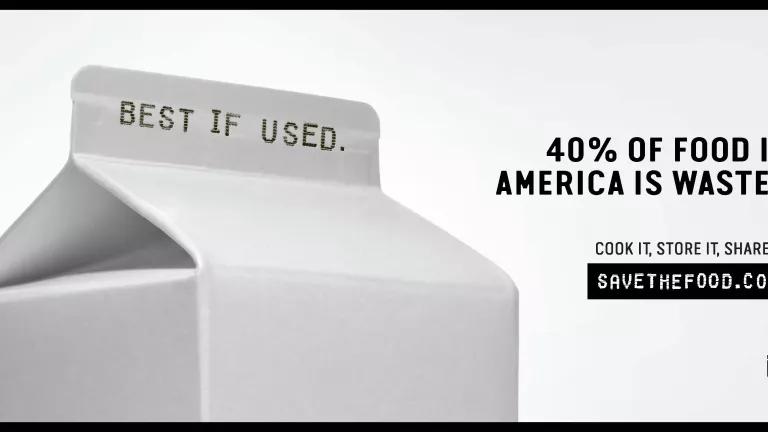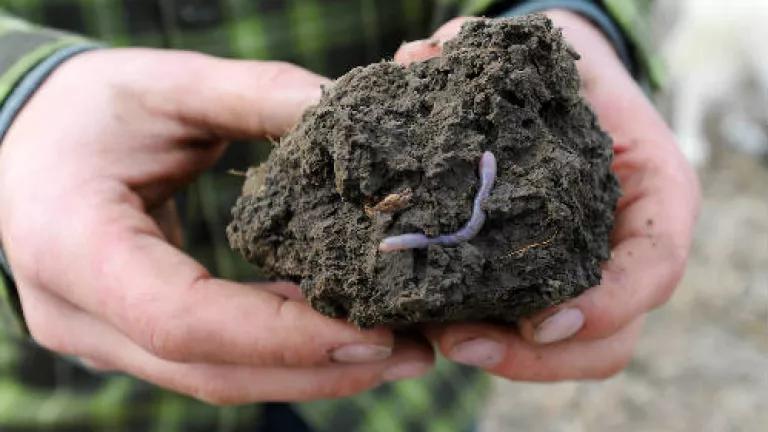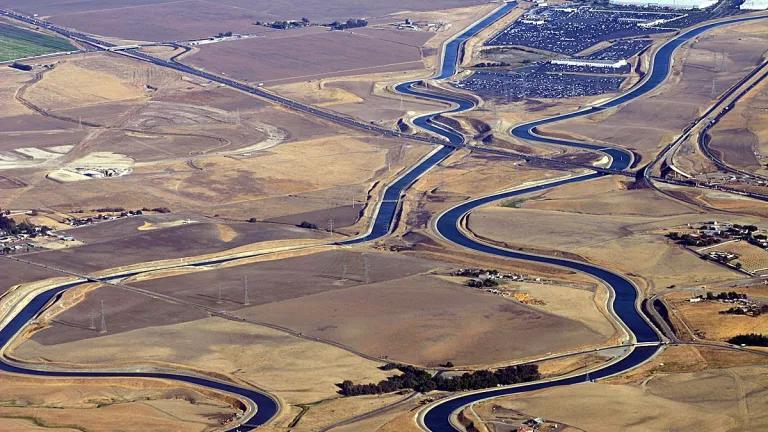
NRDC has teamed up with the Ad Council to help us curb hunger, save money, and help the environment — all by watching our waste.
Walk out of a restaurant at lunch tomorrow and throw an uneaten half-sandwich onto the sidewalk; see what happens. People on the street will glare at you with barely disguised contempt. A few of them might even reproach you publicly for such uncivil behavior. And if a police officer happens to catch you in the act, you’ll very likely be issued a citation, or at least a stern rebuke.
But walk out of the same restaurant and throw an uneaten half-sandwich into the nearest garbage can, and hardly anyone will bat an eye. Some passersby might even smile sympathetically — figuring, perhaps, that you’re watching your weight, and trying to exercise some dietary self-control. A police officer walking past might very well offer a nod of approval at your admirable display of civic responsibility.
Right now, we’re literally trashing more than one-third of our food supply — an ongoing crime against hunger, the environment, efficiency, and common sense. Today, however, a seed is being planted in hopes of changing that reality. My organization, the Natural Resources Defense Council (NRDC) has just teamed up with the Ad Council to launch a new national media campaign, “Save the Food,” that’s aimed at consumers — who happen to be directly responsible for nearly 40 percent of all the food that gets needlessly tossed. The goal: to show these same consumers not only that they bear a significant responsibility to reduce food waste, but also that they have the power, collectively, to make a tremendous and even world-changing difference.
Uneaten food is the single largest contributor to U.S. landfills today. As much as 40 percent of the food in this country goes to waste — more than $162 billion worth every year — accounting for nearly a quarter of U.S. water consumption and 4 percent of our oil consumption. And it’s not just an American problem: If global food waste were a country, it would have the third-largest greenhouse-gas footprint in the world — ranking right behind the United States and China in terms of how much carbon pollution is generated from its growing, cooling, transportation, and disposal.
The good news is that cutting down on food waste in your own home is actually pretty easy. If done right, it can even lead to a burst of creativity in your kitchen, and fresher food on your dining table. I actually wrote an entire book, the Waste-Free Kitchen Handbook, that’s filled with ideas for how to do this. Now the “Save the Food” campaign is going to share some of these same ideas — and lots of others — with many more Americans.
For the past several years, my colleagues at NRDC and I have been working with agency and government leaders to create new waste reduction targets, and with the business sector to encourage innovative new approaches. And recently our efforts have begun to bear fruit. Last September, for instance, the Obama administration announced the nation’s first-ever food-waste reduction goal, calling for a 50 percent decrease over the next 15 years; just days later, the United Nations announced a similar goal of its own. Two months after that, as part of its omnibus budget bill, Congress authorized landmark legislation that would greatly expand donations of food that might otherwise go to waste.
At the same time, grocers, appliance manufacturers, and non-profits have upped their games to expand the market for cosmetically imperfect (yet healthful and tasty) fruits and vegetables, to improve food storage, and to create an organized, efficient marketplace for donations. Still, so entrenched is the issue of food waste — and so widely dispersed are the factors contributing to it — that no single silver bullet exists in the form of policy or technology. Goals, guidelines, and technological breakthroughs turn out to be necessary, but not sufficient, for solving the problem. What’s required, ultimately, is a cultural paradigm shift: a transformation of our collective sense of what’s right and wrong, acceptable and unacceptable.
For this transformation to take place, consumers will certainly need effective tools, be they logistical or technological. But before that, they’ll need something else: awareness.
That’s where “Save the Food” comes in. The campaign, which is being unveiled today at the second annual Food Tank Summit in Washington, D.C., will be multimodal and multifaceted, integrating video, print, and digital messaging that you’ll soon be seeing everywhere — on billboards and the sides of buses, in newsprint and your social media feeds.
One of the most effective — and affecting — modes of outreach will be a video PSA, “The Extraordinary Life and Times of Strawberry,” which tells the story of a single strawberry as it makes its way from the farm to the supermarket to a family’s refrigerator . . . and beyond. Produced pro bono by our creative partner, the award-winning digital agency SapientNitro, the video manages to convey, with real poignancy, the everyday tragedy of wasted food.
Our hope is that videos like this one, in concert with the many other aspects of the “Save the Food” campaign, will prompt consumers to see the problem of food waste not as something abstract and intractable, but as something concrete and fixable. There’s already plenty of evidence to suggest that the food industry is willing to meet this challenge: Many restaurants and grocery stores — for reasons that may have as much to do with profit margins as public-mindedness — are now taking measures to cut down on waste significantly, often by doing things like reducing portion sizes, or discounting bruised or otherwise “unaesthetic” produce.
But in the end, grocers and restaurants are dependent on the behavior of us, the consumers. And as long as we expect the providers of our food to give us giant servings of only that food which presents as “perfect,” we’re giving life to that old saw about the perfect being the enemy of the good. On the other hand, if people are willing to be just a little more imaginative — to think outside the icebox, if you will — they can come together to save food, save money, curb hunger, and help the environment.
We’re coming to the table. We hope to see you there.



